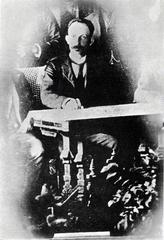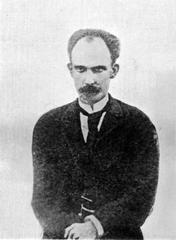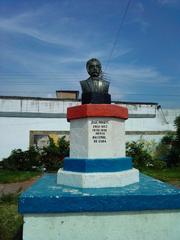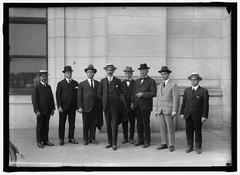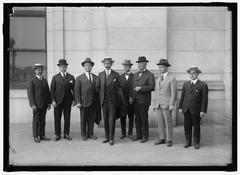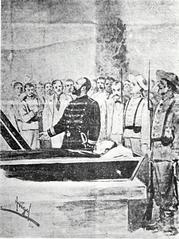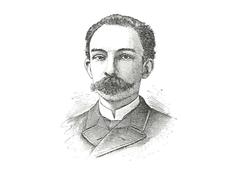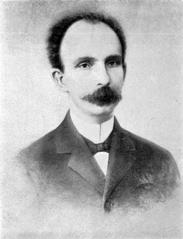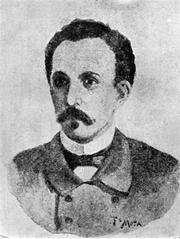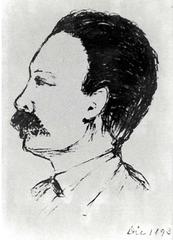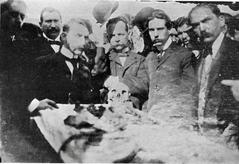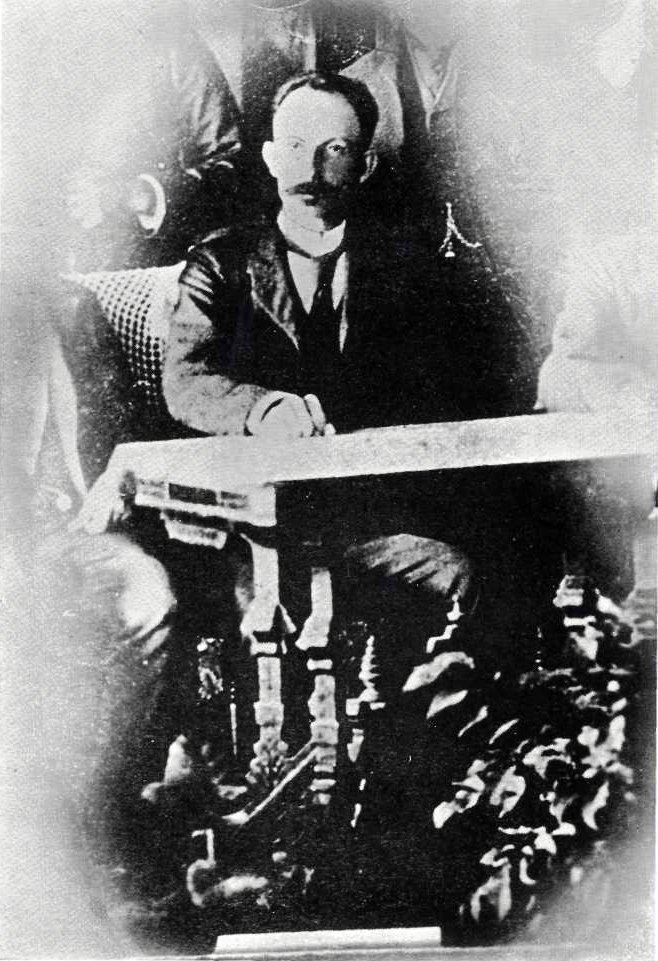
Visiting the José Martí Monument in Athens, Greece: Complete Guide with Tickets, Hours, and Tips
Date: 14/06/2025
Introduction: The José Martí Monument in Athens – History and Significance
In the vibrant heart of Athens, the José Martí Monument stands as a powerful tribute to one of Latin America’s most celebrated figures. Honoring José Julián Martí Pérez—Cuba’s national hero, visionary poet, and passionate advocate for independence—the monument serves as more than a memorial. It is a bridge between Cuban and Greek histories, symbolizing enduring ideals of liberty, resilience, and transnational solidarity. For visitors, it offers not just a window into Martí’s life and legacy, but also an opportunity to reflect on the universal struggle for justice and the shared values of democracy that connect nations across continents (LoveCuba, Google Arts & Culture).
This guide provides all the essential information you need to plan your visit—from practical details like opening hours and transportation, to insights on the monument’s cultural significance, design, and nearby attractions. Whether you’re a history enthusiast or a curious traveler, you’ll find tips for the best times to visit, accessibility options, and suggested itineraries to integrate the José Martí Monument into your exploration of Athens’ rich historical landscape.
For up-to-date event listings and travel insights, consult resources such as This is Athens and Athens Insiders.
Contents Overview
- Introduction
- Visiting Hours and Tickets
- Accessibility and Travel Tips
- Historical Background and Significance
- The José Martí Monument: Artistic Features and Symbolism
- Practical Visitor Information
- Nearby Attractions and Itinerary Suggestions
- FAQ – Frequently Asked Questions
- Conclusion and Recommendations
- Sources and Further Reading
Visiting Hours and Tickets
- Location: 1 Maiandrou, Athens 11528
- Hours: Open-air monument accessible year-round, typically from 8:00 AM to 8:00 PM.
- Tickets: No entrance fee; free public access.
- [Special Events: For commemorations or guided tours, check This is Athens for updates.](#special-events:-for-commemorations-or-guided-tours,-check-this-is-athens-for-updates.)
Accessibility and Travel Tips
- Getting There: The monument is easily accessible via Athens’ public transportation network. Several bus lines serve stops close to the site, and metro stations are within walking distance.
- On Foot: The area is pedestrian-friendly. Wear comfortable shoes for exploring the surrounding Vedado neighborhood and its green plazas.
- Accessibility: The monument area is generally wheelchair accessible with paved walkways and ramps, but do check current conditions if you have mobility needs.
- Best Times to Visit: Early morning or late afternoon for cooler temperatures and optimal photography lighting.
- Safety: Athens is safe for tourists; remain aware of your belongings in crowded areas (Dave’s Travel Pages).
Historical Background and Significance
Who Was José Martí?
- Birth: January 28, 1853, Havana, Cuba.
- Early Activism: Martí’s opposition to Spanish colonial rule began in his teens, leading to imprisonment and exile.
- Cuban Independence: Known as the “Apostle of Cuban Independence,” Martí unified and mobilized the Cuban revolutionary movement from exile, especially in New York City, where he founded the Cuban Revolutionary Party.
- Literary Influence: His essays (notably “Nuestra América”) and poetry (“Versos Sencillos”) continue to inspire anti-colonial and human rights movements worldwide.
- Martyrdom: Died in battle in 1895, symbolizing ultimate sacrifice for freedom.
The Monument’s Significance in Athens
Athens honors global champions of democracy, and the José Martí Monument reflects both Cuban-Greek friendship and universal ideals of liberty. Its presence in a city synonymous with democracy and civic participation amplifies Martí’s legacy and invites reflection on the interconnectedness of independent struggles throughout history.
The José Martí Monument: Artistic Features and Symbolism
- Design: The monument typically depicts Martí in a contemplative pose, often with a book or quill, highlighting his dual identity as an intellectual and activist (Google Arts & Culture).
- Materials: Use of marble or bronze connects the statue to Greek classical traditions, while Cuban motifs (flags, quotations) root it in its Cuban heritage.
- Inscriptions: Bilingual (Spanish and Greek) engravings, often featuring Martí’s poetry or famous declarations, encourage cross-cultural dialogue.
- Interactive Elements: QR codes and plaques provide historical context and deeper engagement for visitors.
Practical Visitor Information
- Opening Hours: Open 24/7; best visited during daylight hours.
- Tickets: No tickets required.
- Facilities: Cafés, rest areas, and public restrooms are typically available nearby.
- Guided Tours: Some Athens city tours include the monument; check with local operators or Athens Insiders.
- Photography: Allowed and encouraged. Early morning or late afternoon offer the best lighting.
Nearby Attractions and Itinerary Suggestions
- National Archaeological Museum
- Temple of Olympian Zeus
- Syntagma Square, Greek Parliament, and National Gardens
- Plaka and Monastiraki districts
- Local cafés and markets for a taste of Greek cuisine and culture
Combine your visit to the José Martí Monument with these landmarks for a comprehensive Athens experience (Welcome Greece).
Frequently Asked Questions (FAQ)
Q: What are the visiting hours for the José Martí Monument?
A: Open 24/7 as a public monument; visit during daylight for the best experience.
Q: Is there an entrance fee?
A: No, entry is free.
Q: How do I get there by public transport?
A: Multiple bus lines and metro stations are nearby; check local transit maps.
Q: Are guided tours available?
A: Yes, some city tours include the monument; inquire with local tour agencies.
Q: Is the site wheelchair accessible?
A: Generally yes, but confirm with local resources for up-to-date accessibility information.
Q: Are there special events at the monument?
A: Occasional commemorations and cultural events, especially on significant Cuban dates.
Conclusion and Recommendations
A visit to the José Martí Monument in Athens is more than a stop at a historical site—it’s an invitation to engage with a powerful narrative of freedom, dignity, and international friendship. Accessible and free to all, the monument’s artistic and symbolic richness provides opportunities for reflection, learning, and cultural appreciation. For the fullest experience, plan your visit around optimal hours, consider joining a guided tour, and explore the surrounding historical sites that make Athens a city where the past and present converge.
To stay updated on events and travel tips, download the Audiala app and follow trusted sources like This is Athens and Athens Insiders.
Embrace this unique landmark as part of your Athens journey, and let the legacy of José Martí inspire your exploration of the city’s dynamic history and culture (Google Arts & Culture, LoveCuba).
Sources and Further Reading
- This is Athens – Events
- Who Was José Martí? – LoveCuba
- José Martí in History and Art – Google Arts & Culture
- 20 Must-Visit Attractions in Athens – Athens Insiders
- Athens Events – This is Athens
